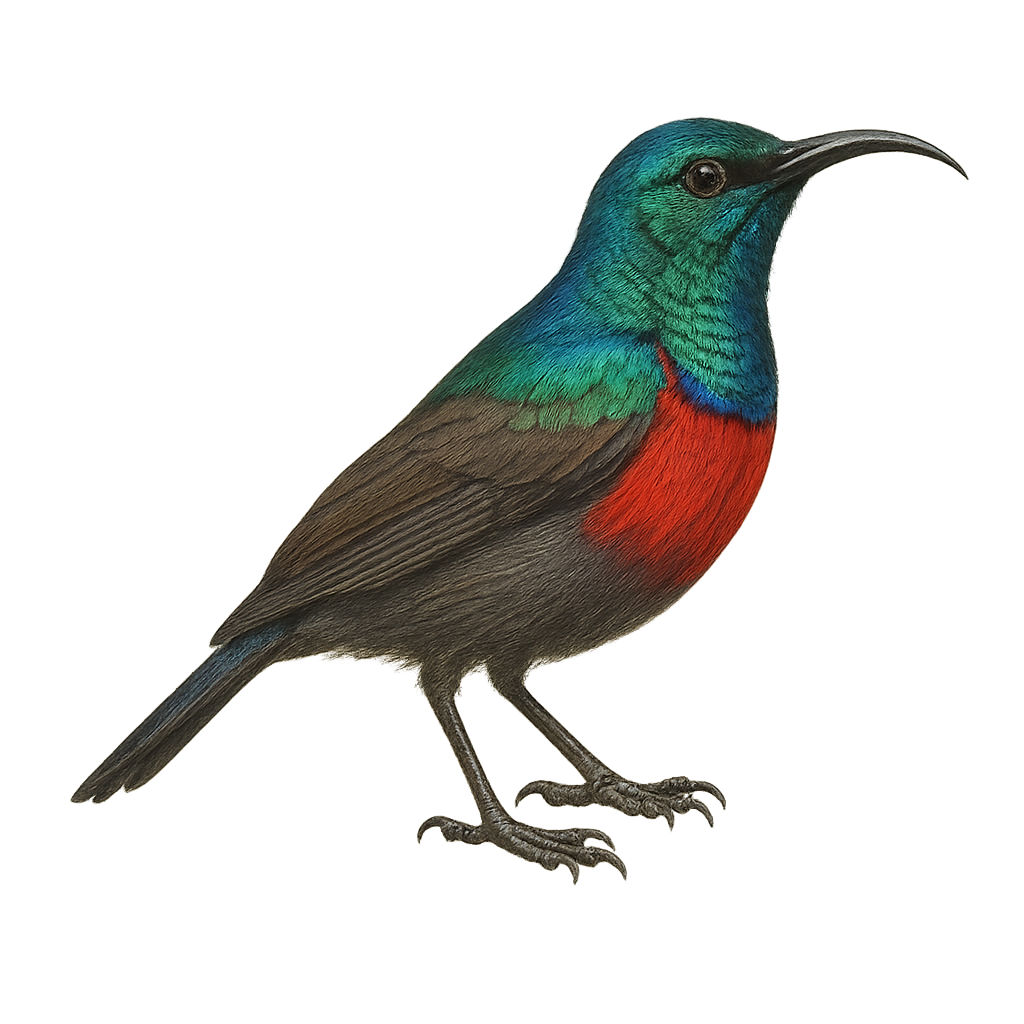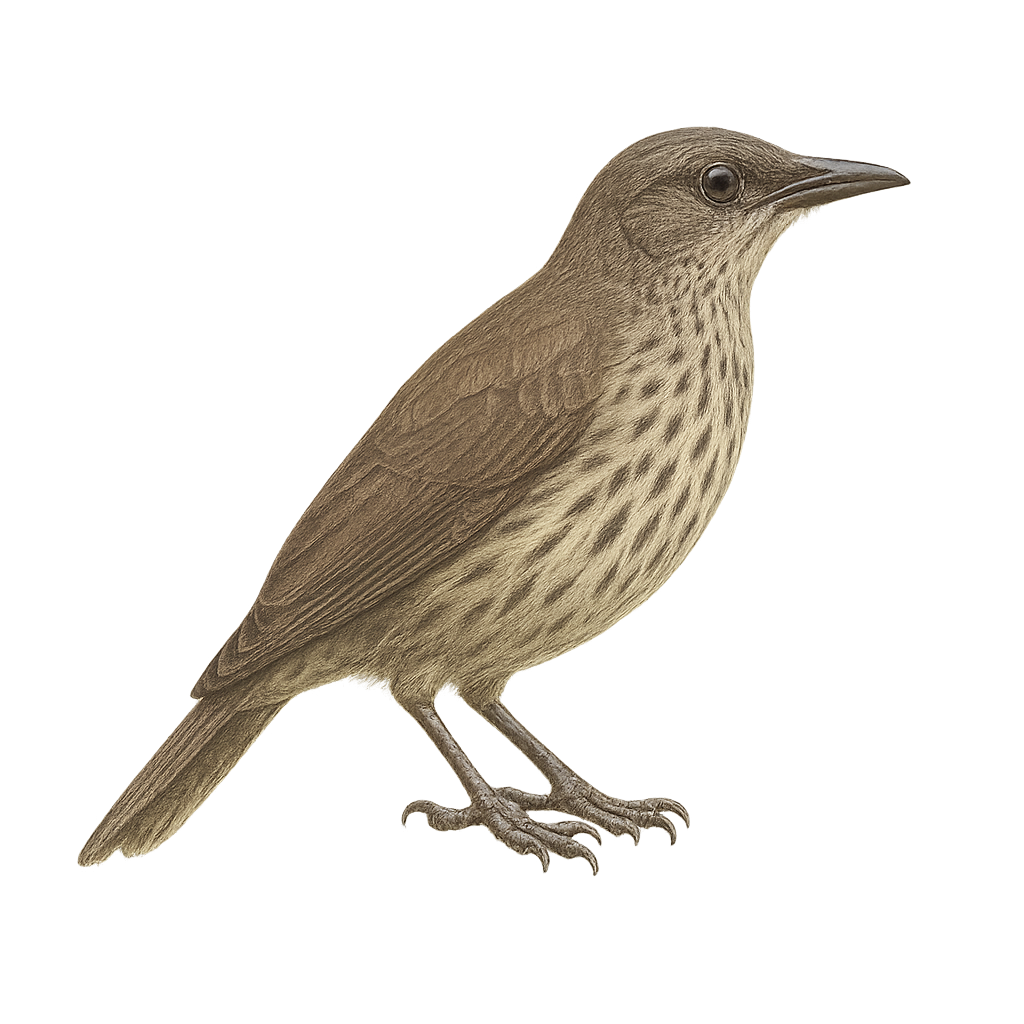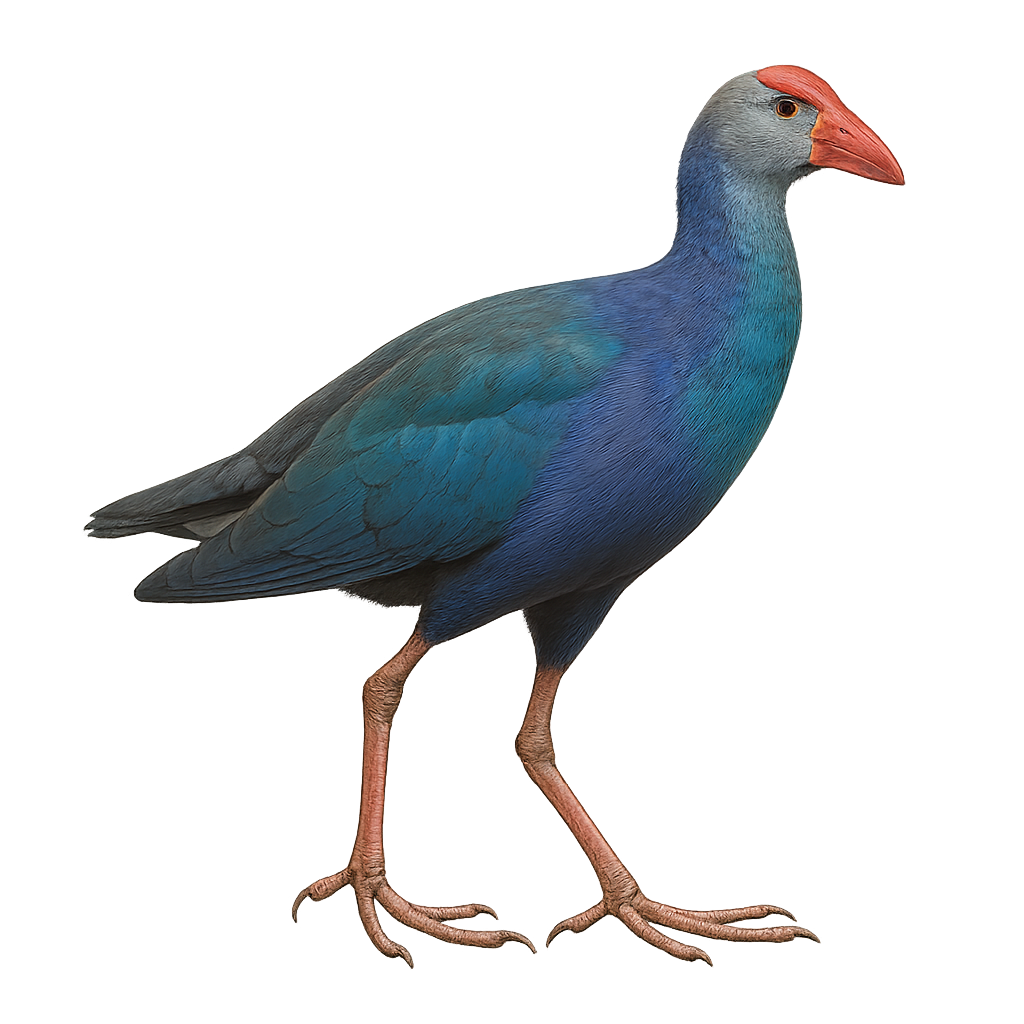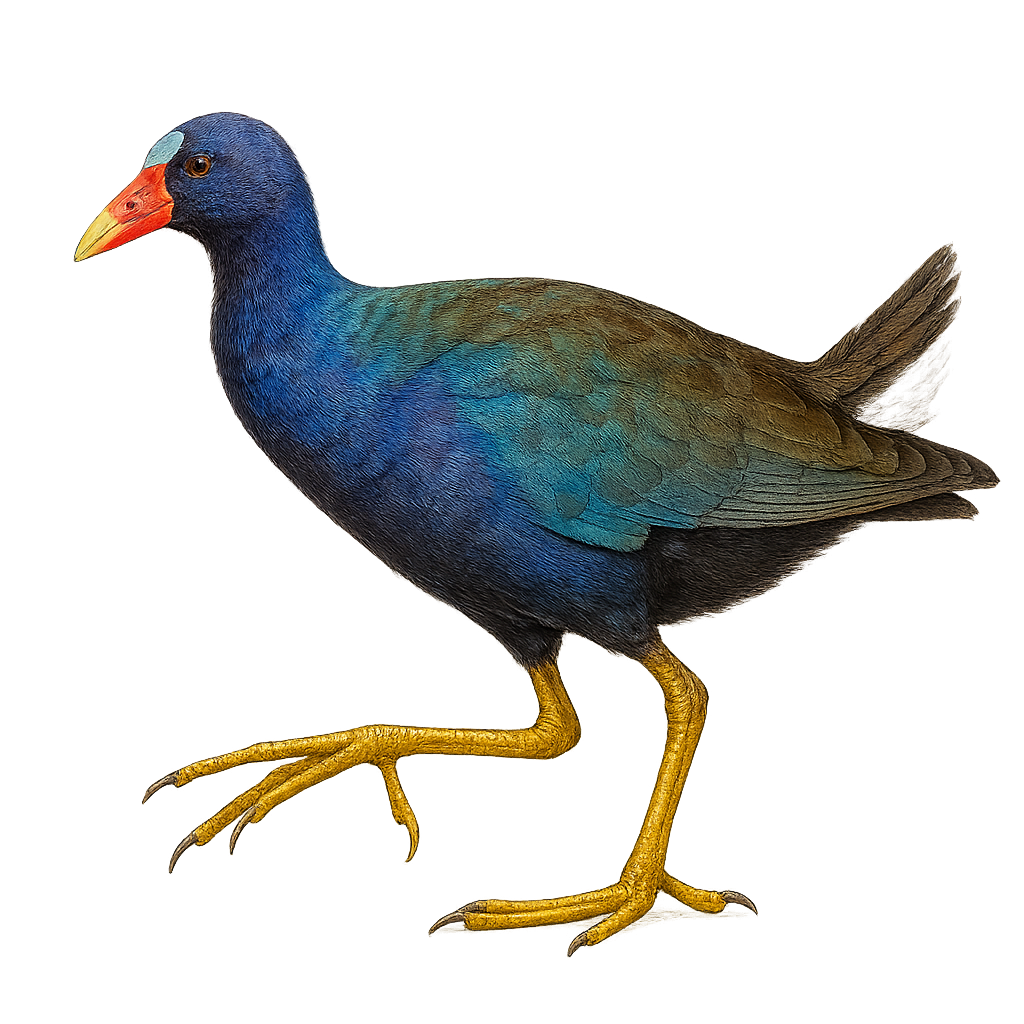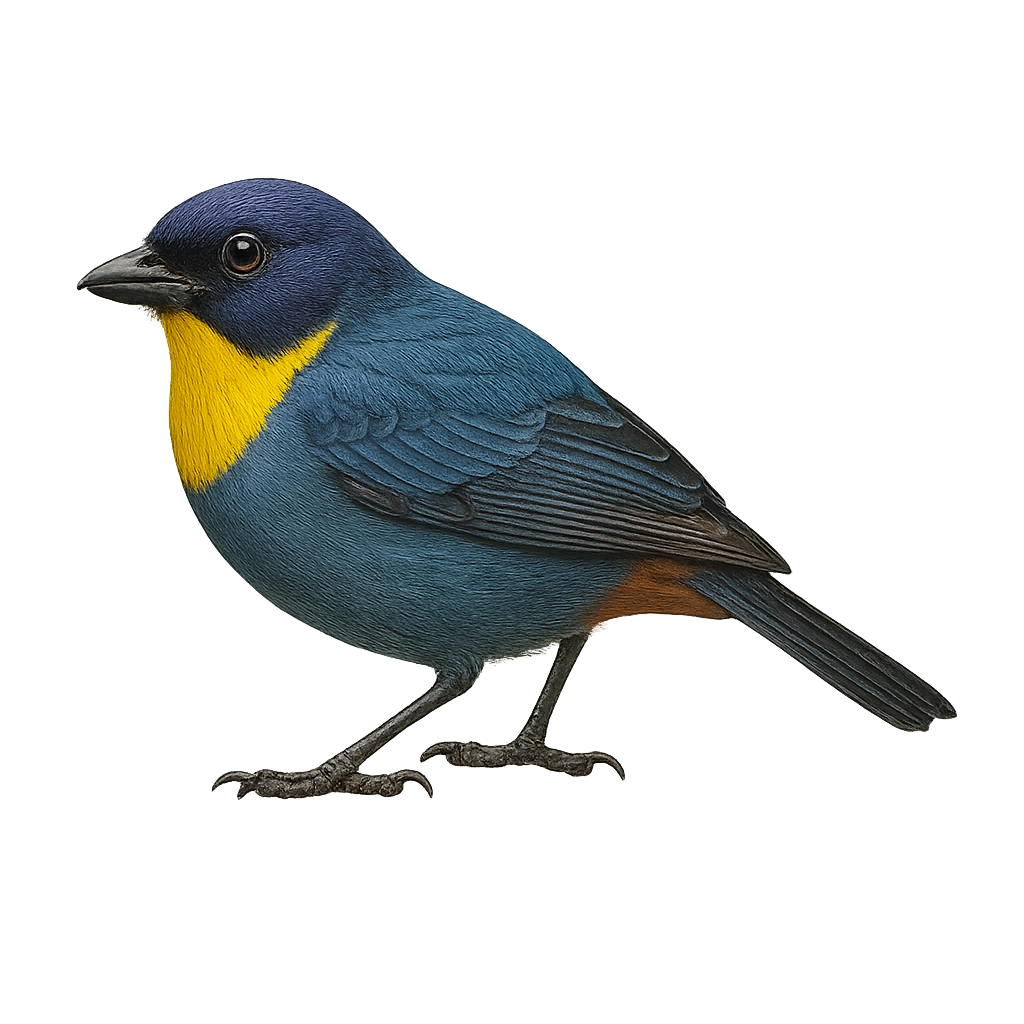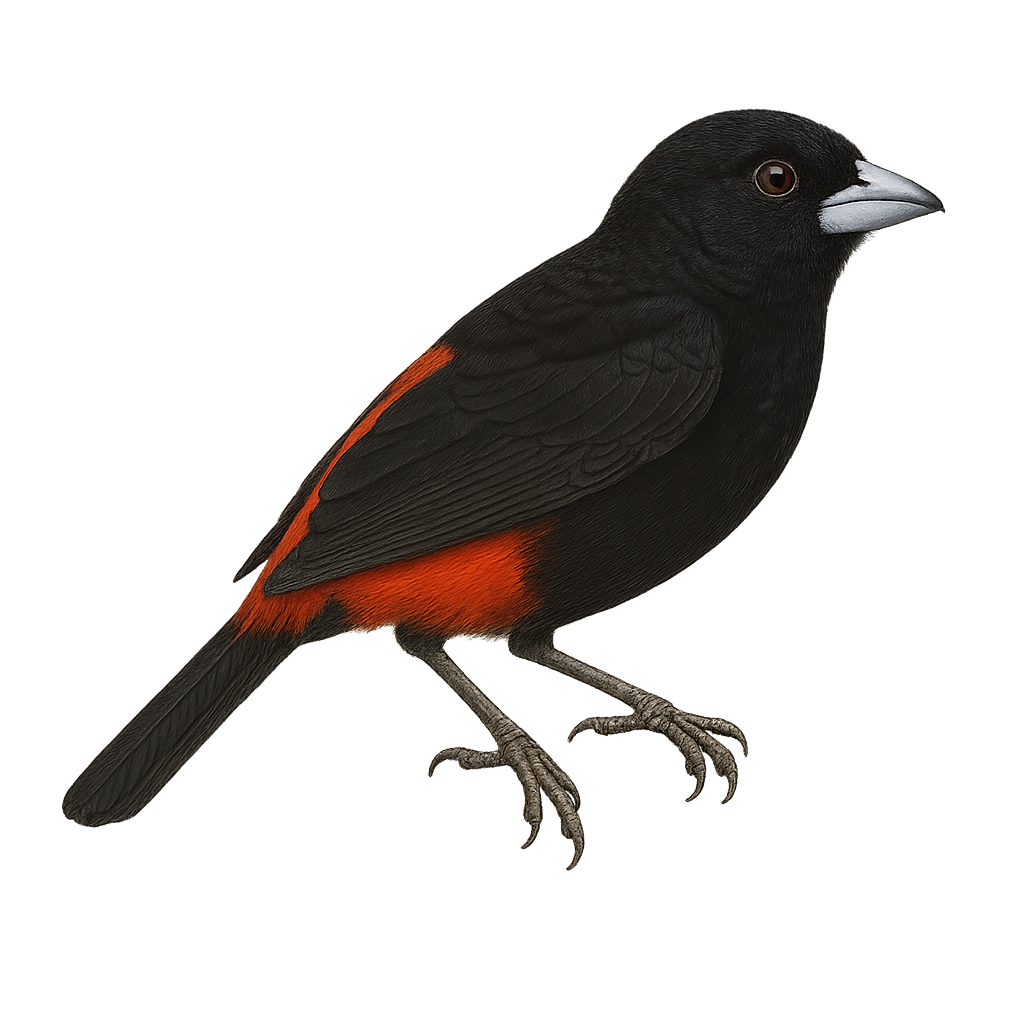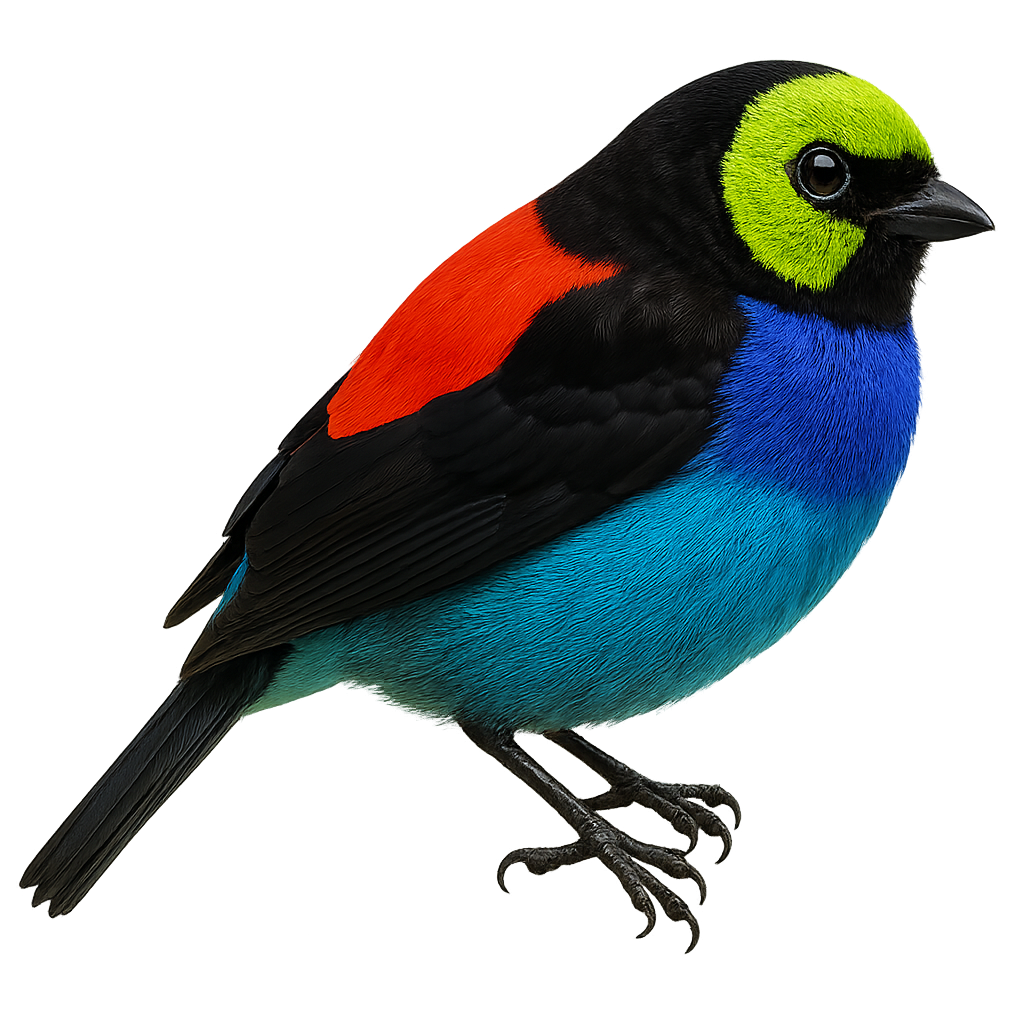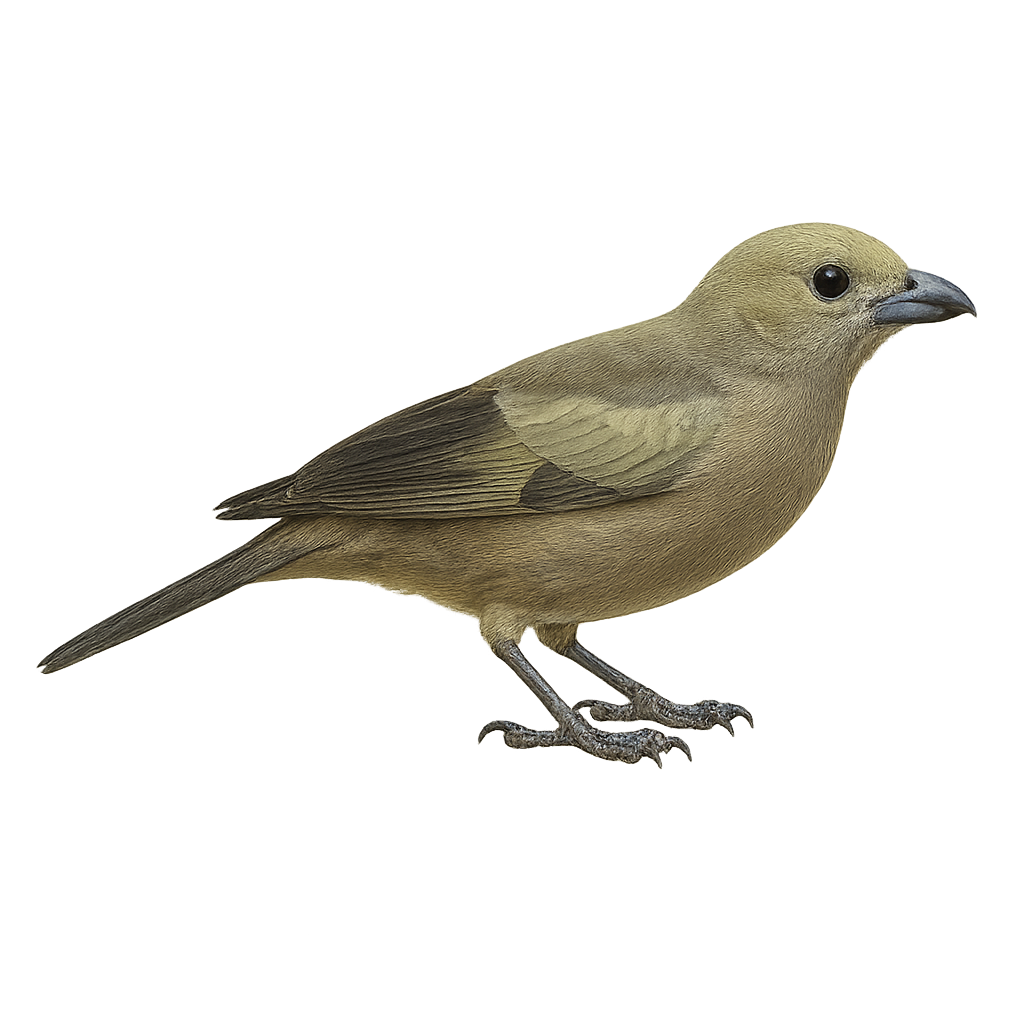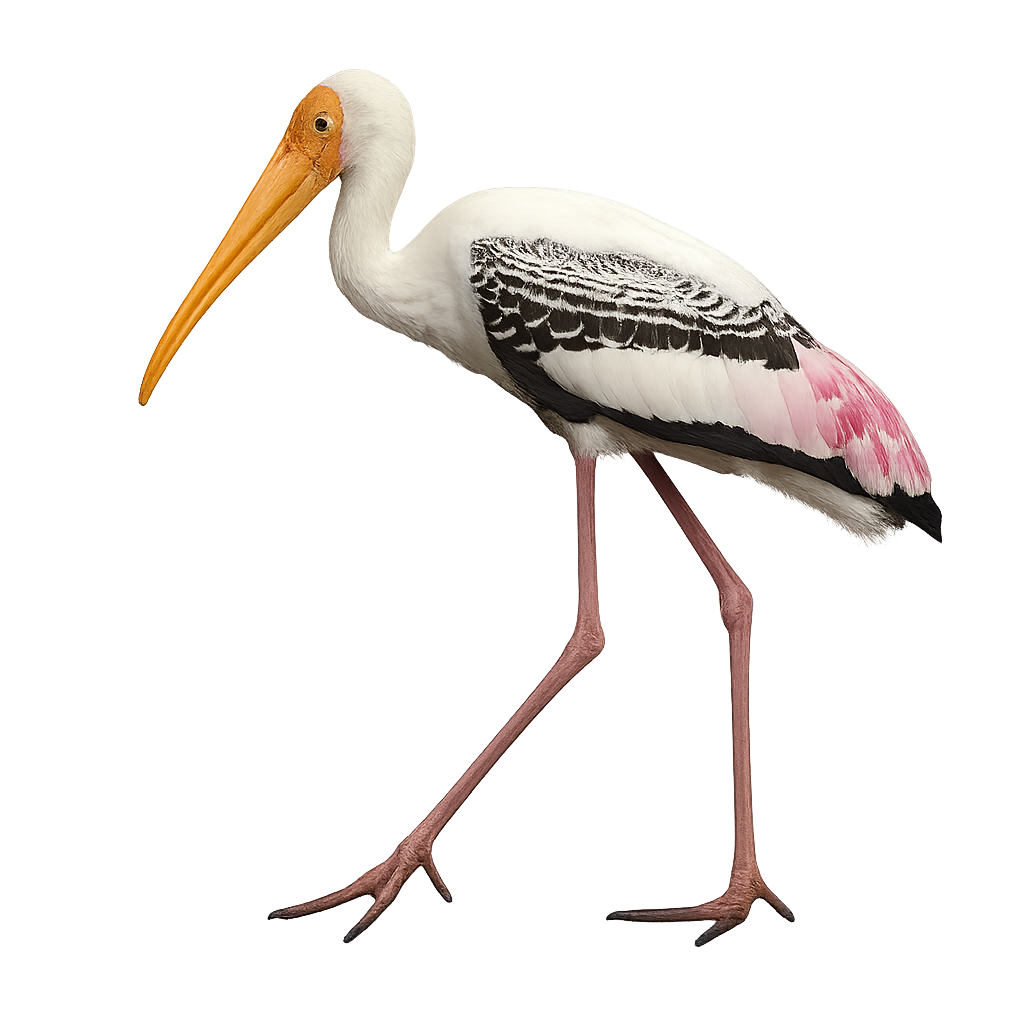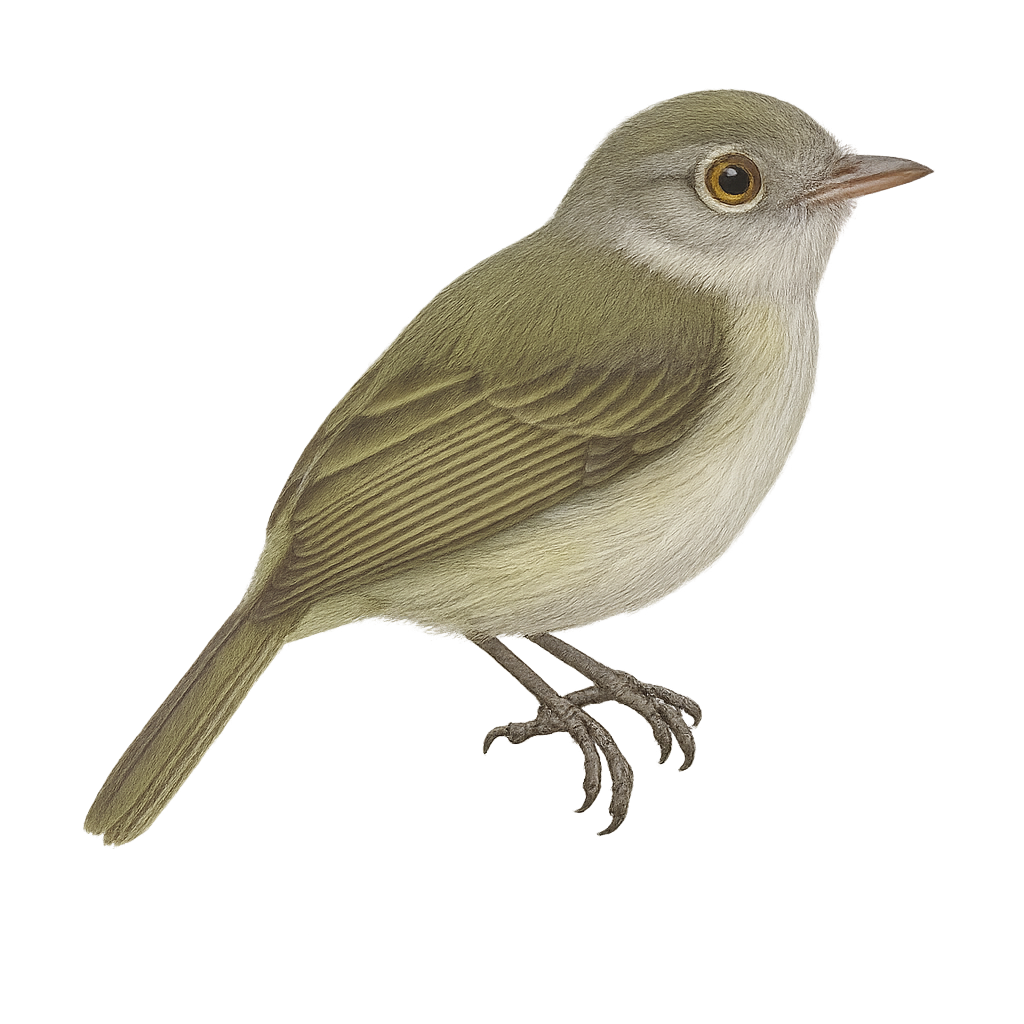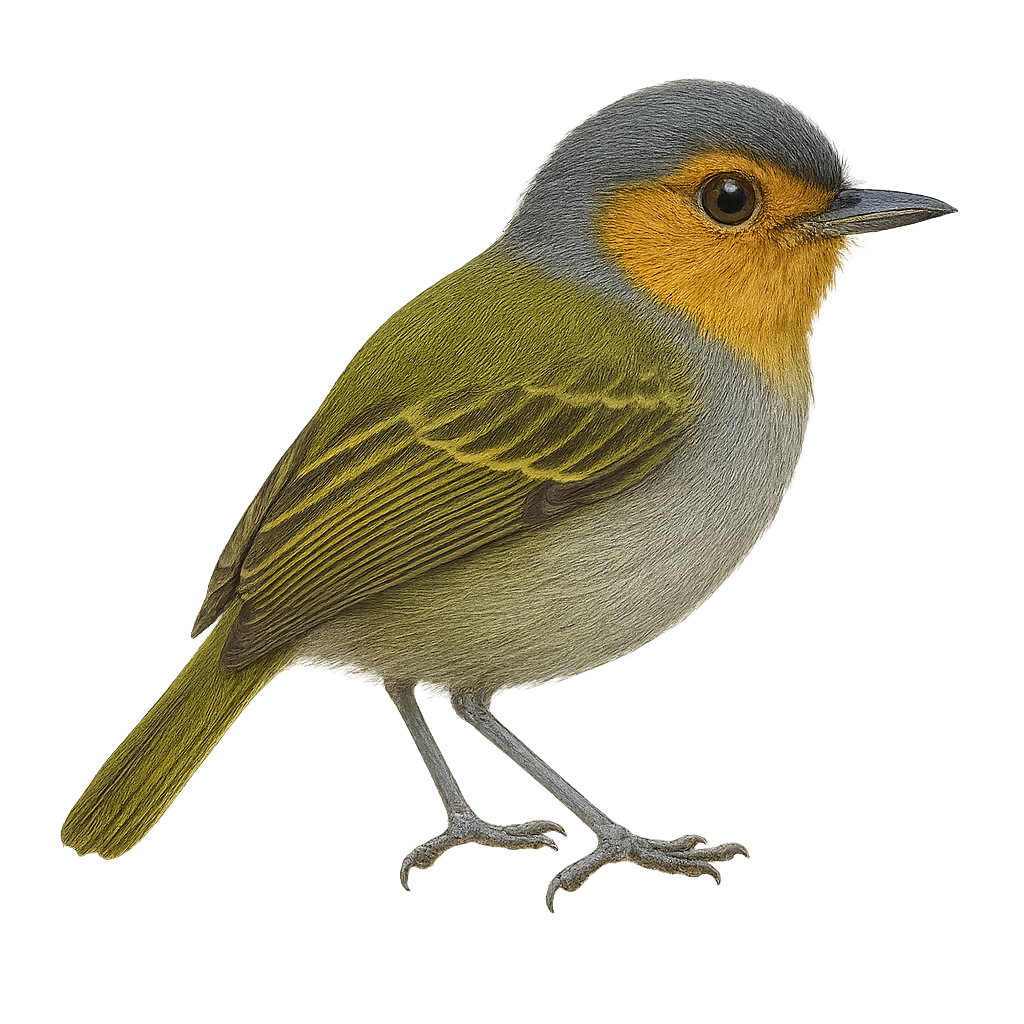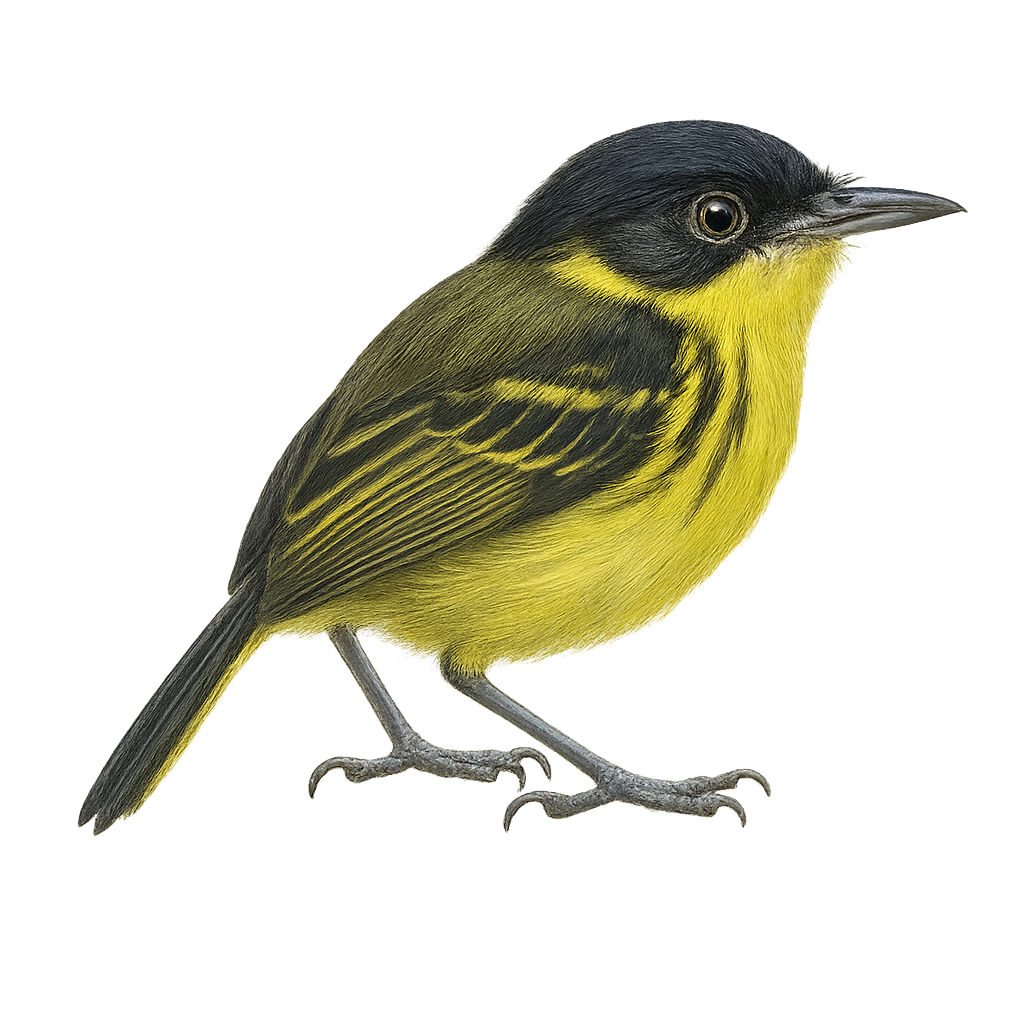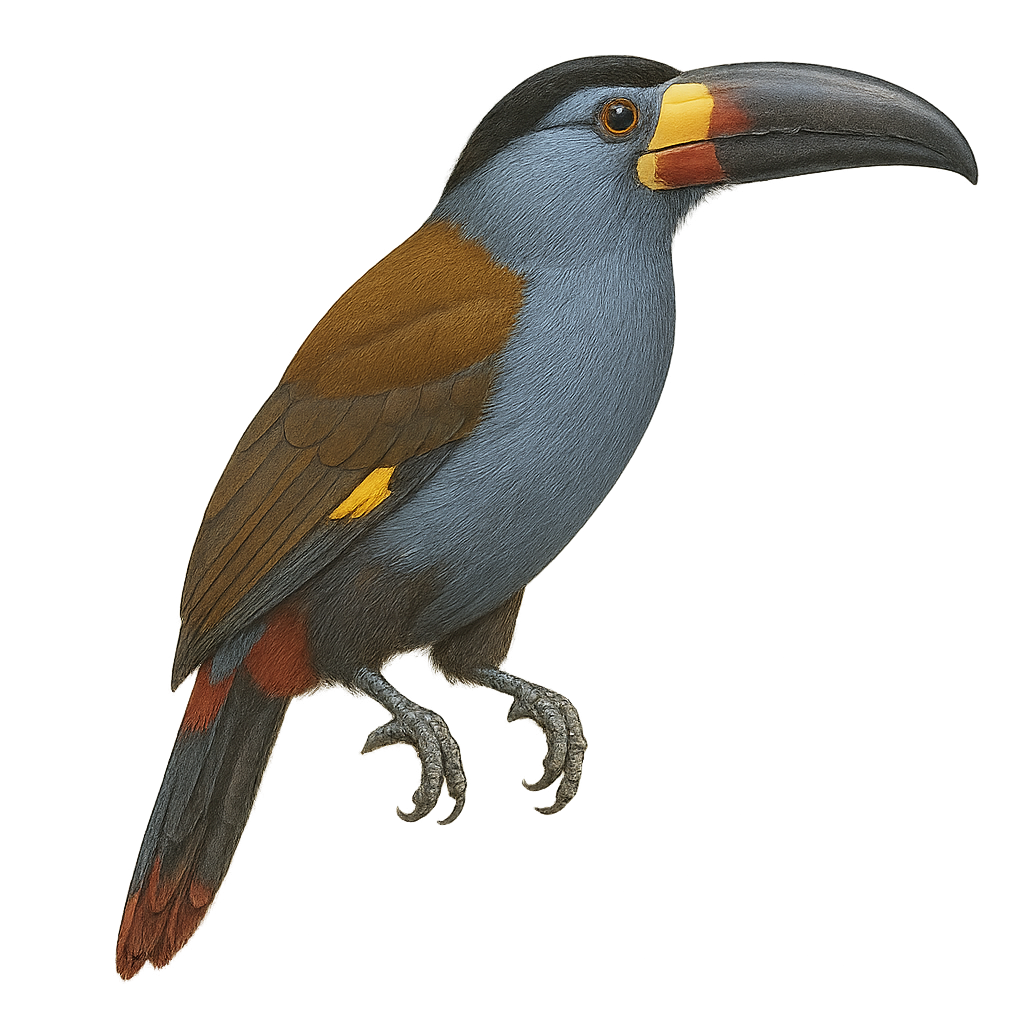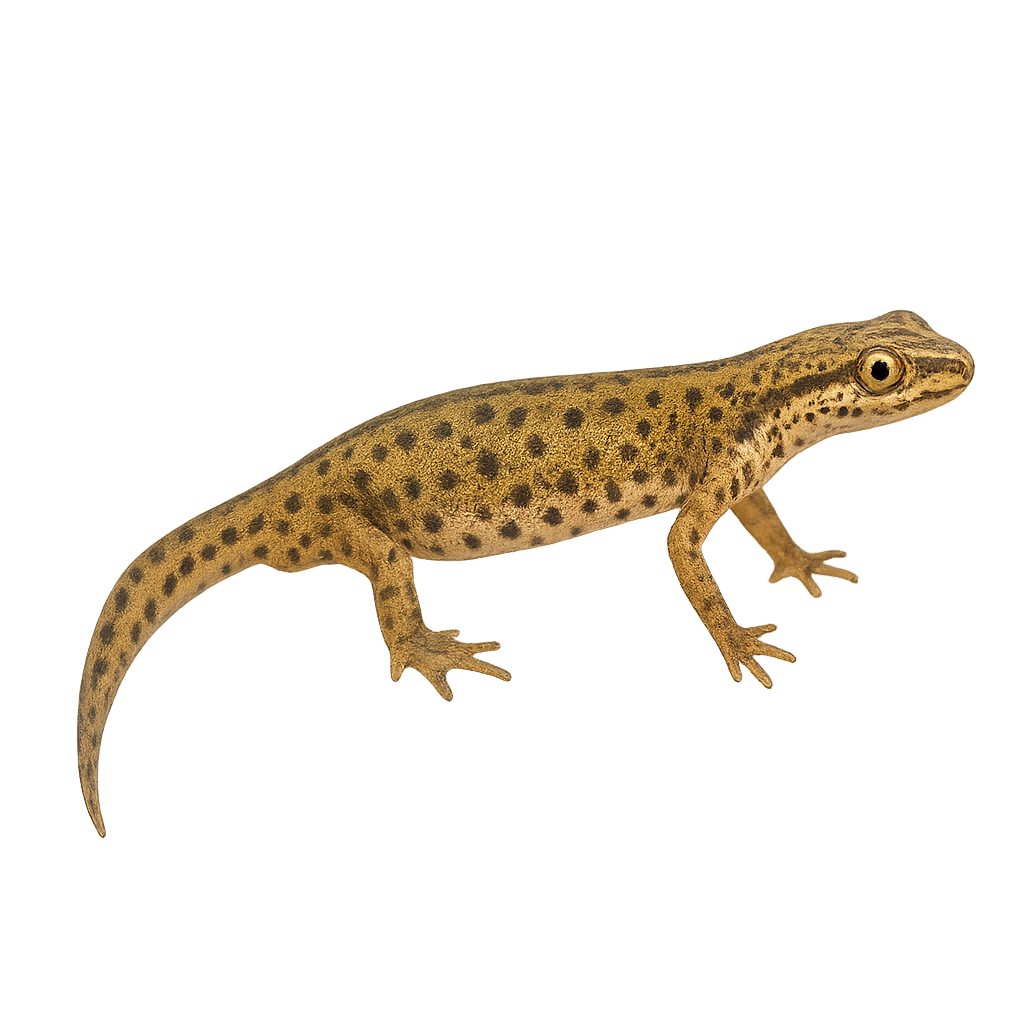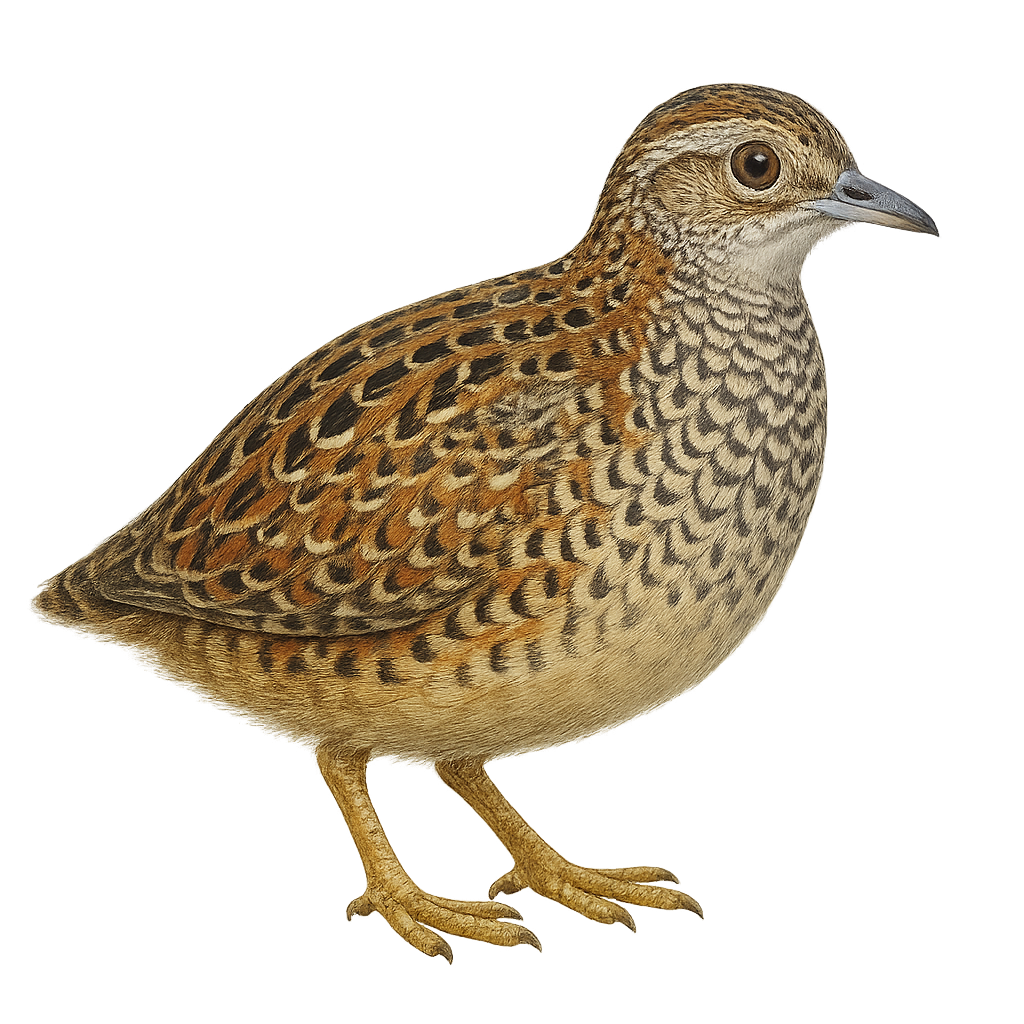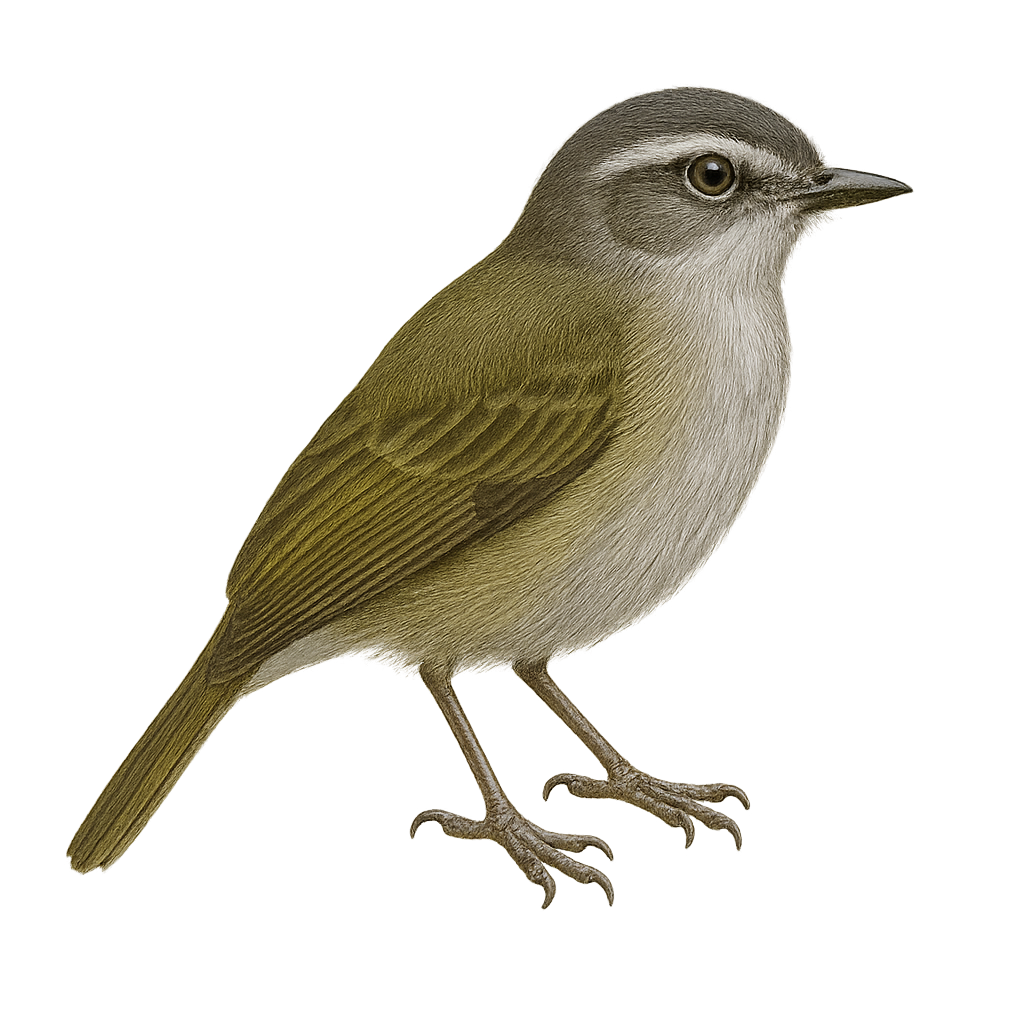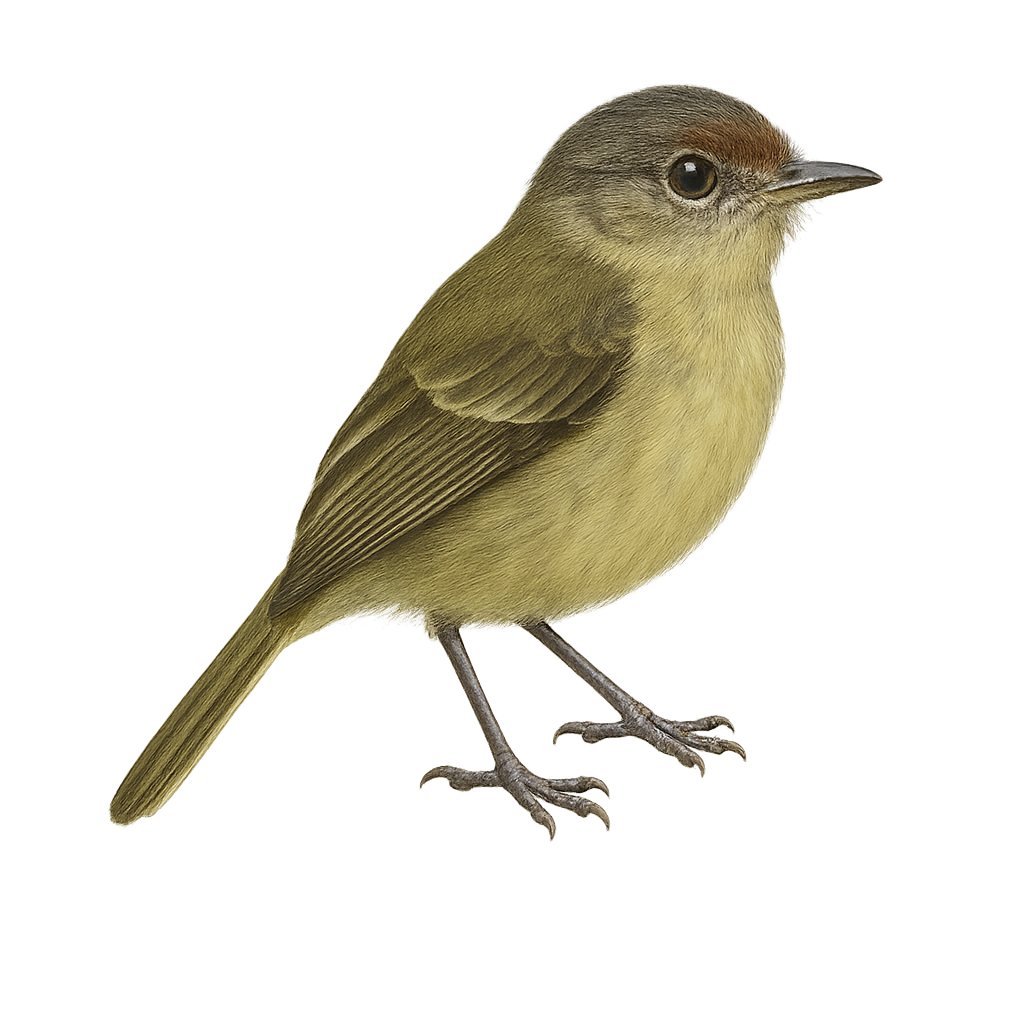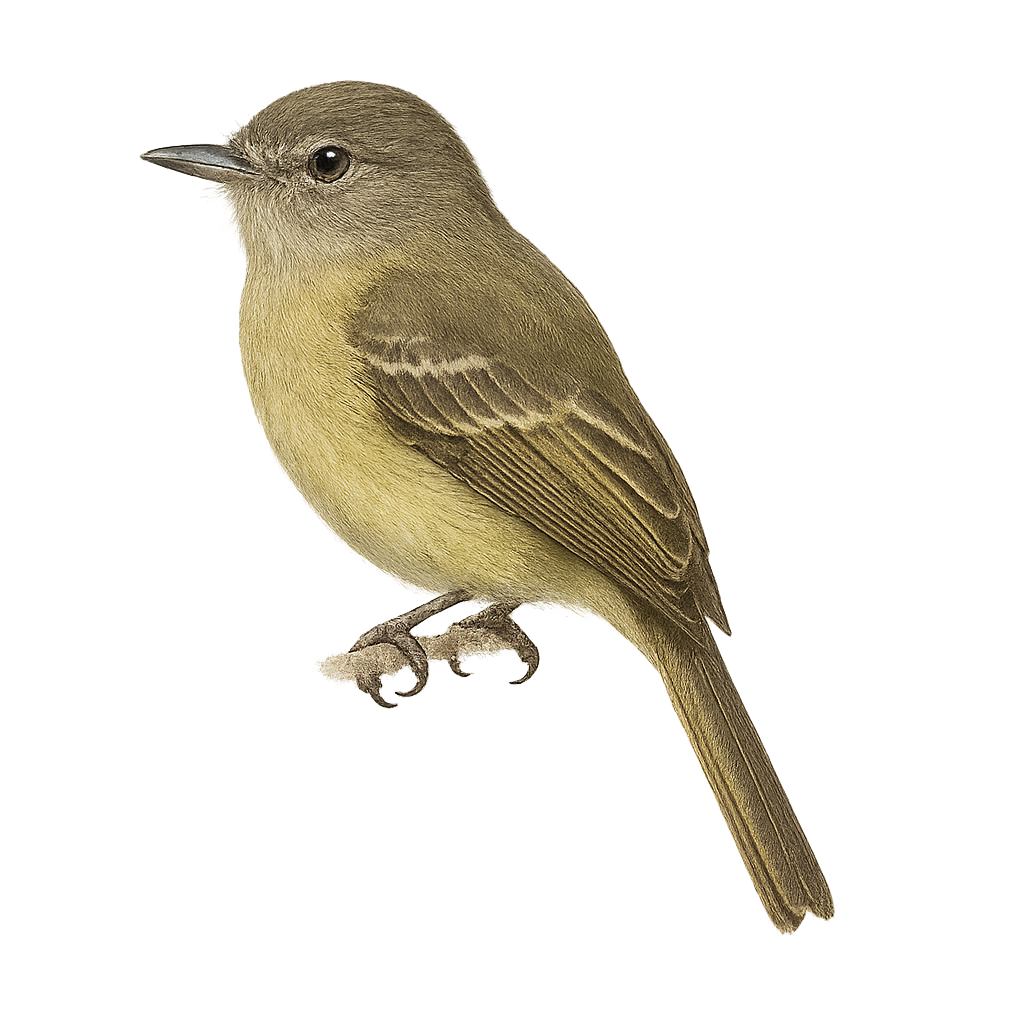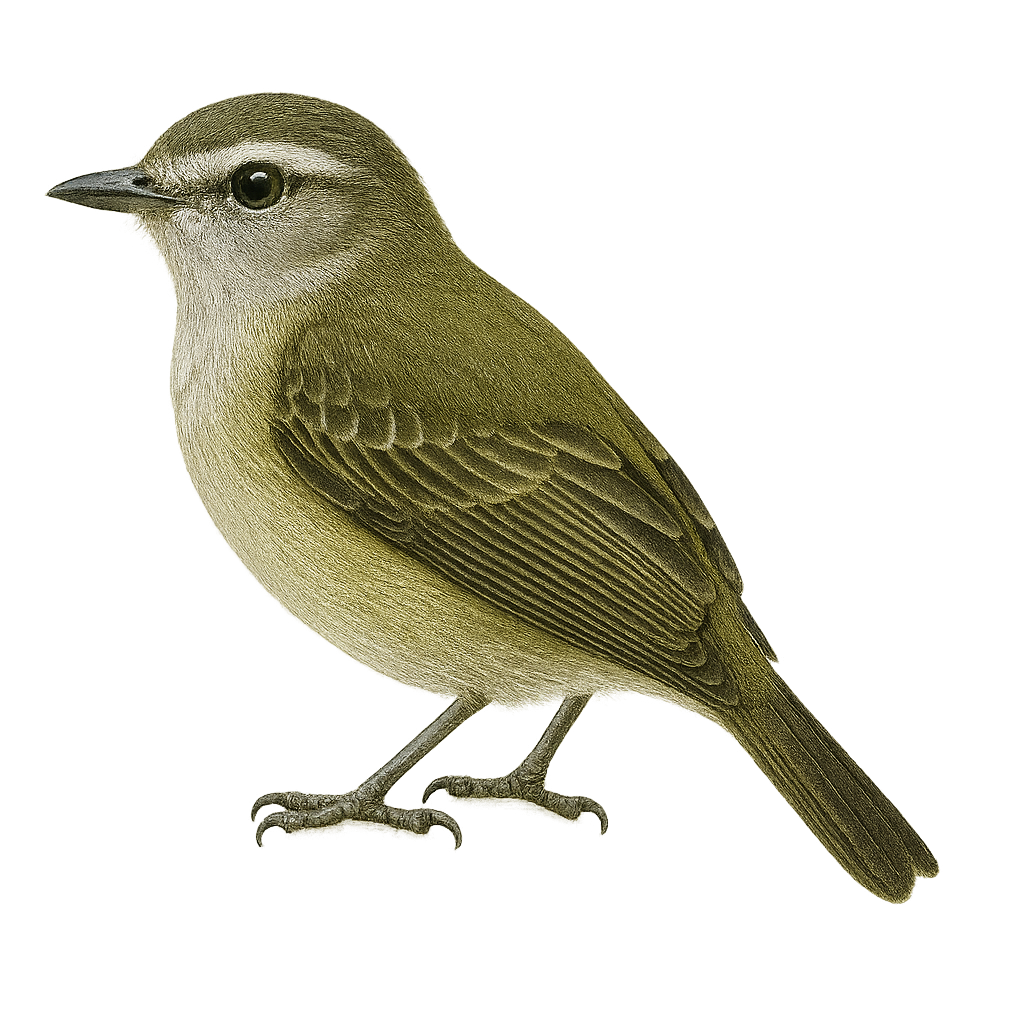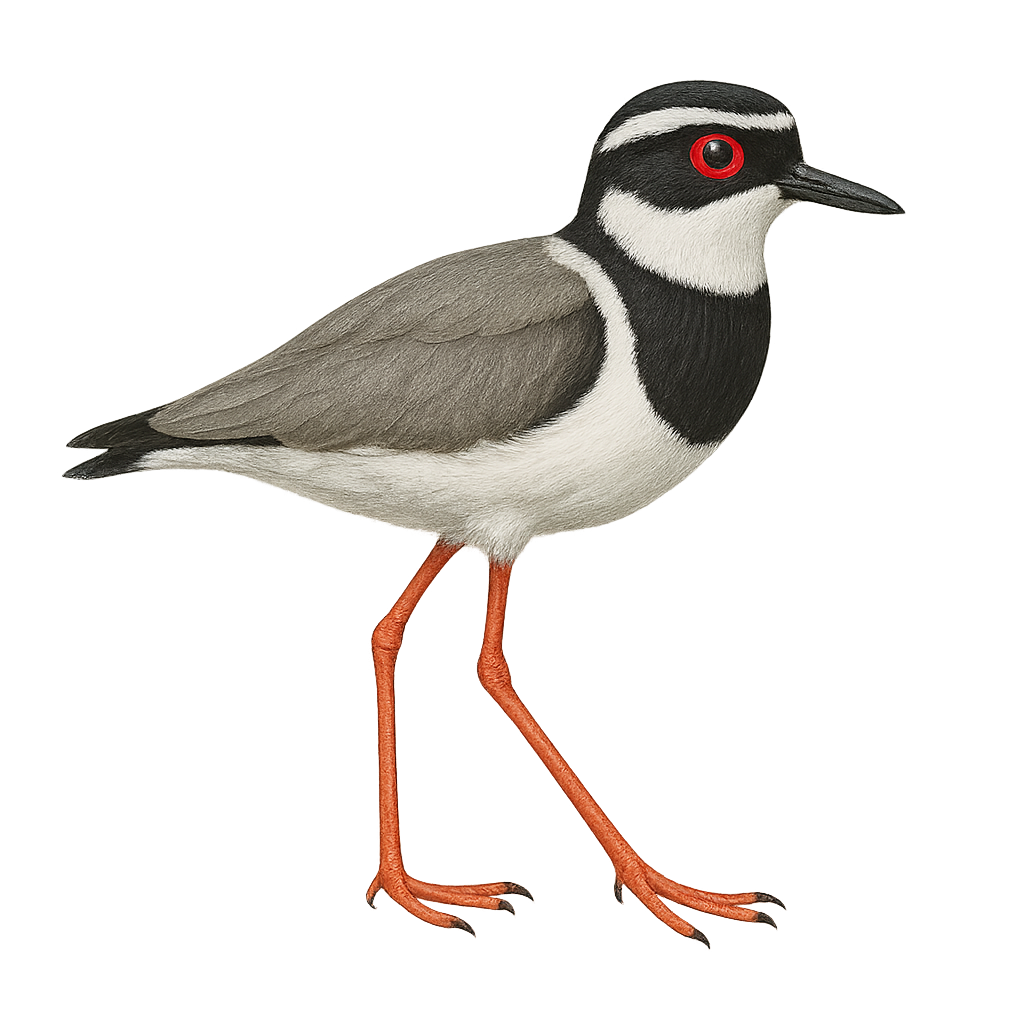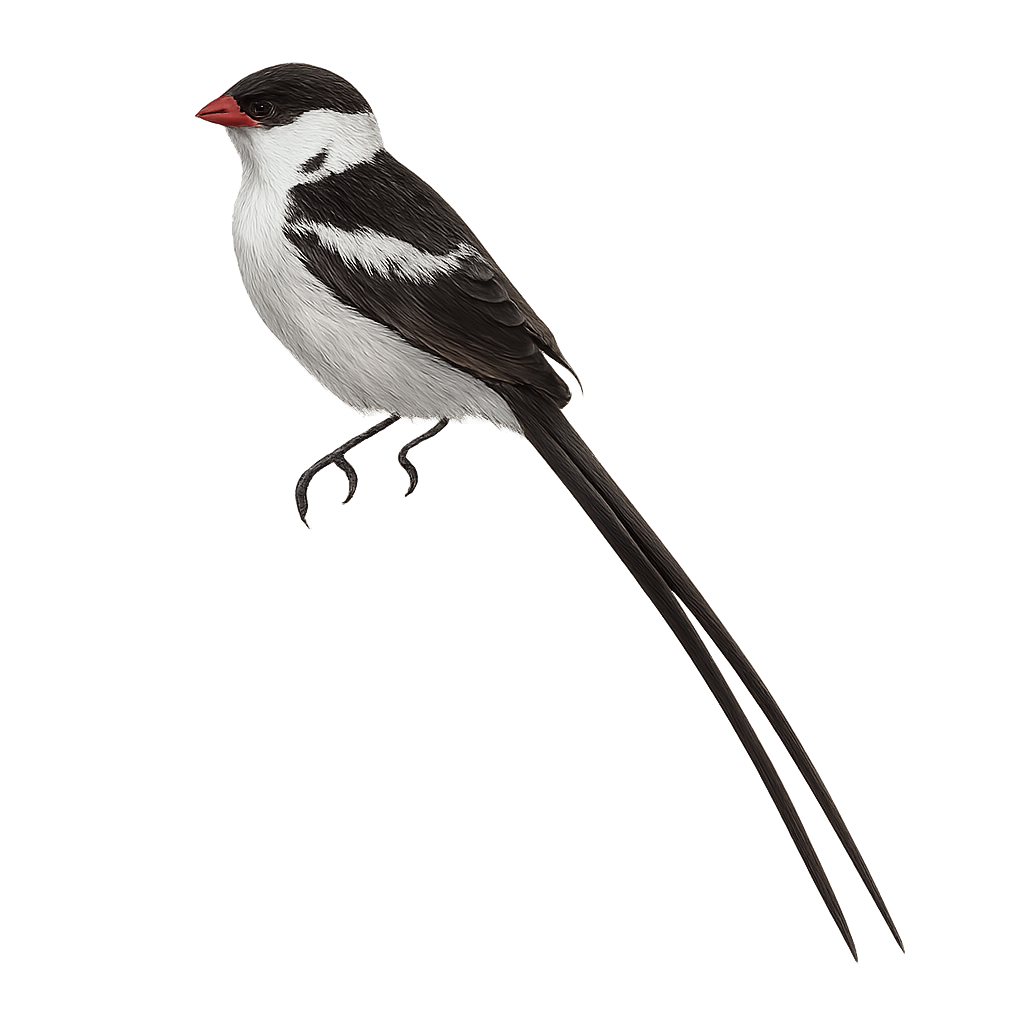The Purple Sunbird, or Cinnyris asiaticus, is a small bird found mainly in South Asia. Known for its vibrant plumage, especially in males, it displays metallic colors ranging from blue to violet. The female, on the other hand, has more subdued tones, with an olive-brown plumage. These birds are often seen in gardens, open forests, and urban areas, where they primarily feed on nectar, but also insects. Their slender, curved beak is perfectly adapted for extracting nectar from flowers. The Purple Sunbird is a very active bird, often seen flitting from flower to flower, playing a crucial role in plant pollination.
The Preuss's Sunbird is a small, brightly colored bird primarily found in the humid tropical forests of Central Africa. It is recognizable by its vibrant plumage, with metallic green and blue hues on its back and head, and a bright red chest. Males and females exhibit marked sexual dimorphism, with females having duller colors. This nectarivore primarily feeds on nectar but also consumes insects to supplement its diet. It plays a crucial role in the pollination of tropical plants. The Preuss's Sunbird is an active and agile bird, often seen darting quickly from flower to flower.
The Polynesian Starling, or Aplonis tabuensis, is a medium-sized bird belonging to the Sturnidae family. It is primarily found in the islands of Polynesia, where it inhabits tropical forests, mangroves, and wooded areas. This bird is distinguished by its dark, glossy plumage, often black with metallic sheens. Known for its adaptability, it thrives even in disturbed habitats. The Polynesian Starling is a sociable bird, often seen in small groups. Its diet is varied, including fruits, insects, and sometimes small vertebrates. Although its conservation status is currently "least concern," monitoring its populations is essential due to potential threats such as deforestation and invasive species.
The Pale-breasted Spinetail is a small bird from the Furnariidae family, primarily found in South America. It is characterized by its reddish-brown plumage and lighter, almost white breast. This bird is often seen in dense undergrowth and secondary forests, where it moves nimbly in search of food. It primarily feeds on insects and small invertebrates, which it finds by foraging through foliage and low branches. The Pale-breasted Spinetail is known for its distinctive song, a series of rapid, repetitive trills that echo through its habitat. Although relatively common within its range, it remains elusive and difficult to spot due to its wary behavior and preference for densely vegetated areas.
The Purple Swamphen, or Porphyrio porphyrio, is a striking waterbird known for its vivid blue-purple plumage and bright red bill. It primarily inhabits marshes, lakes, and wetlands with dense vegetation. This bird is recognized for its graceful walk and swimming ability. The Purple Swamphen is omnivorous, feeding on aquatic plants, insects, and small animals. It is often seen walking on water lilies thanks to its long toes. Although generally discreet, it can be noisy, emitting loud and varied calls. Its presence is an indicator of healthy aquatic ecosystems.
The Purple Gallinule, or Porphyrio martinica, is a striking waterbird known for its vivid colors. It features a bright blue-purple plumage, a red bill with a yellow tip, and long yellow legs. This species is primarily found in marshes, ponds, and wetlands of Central and South America, as well as the southern United States. It is known for its ability to walk on floating vegetation due to its long toes. The Purple Gallinule is a social bird, often seen in small groups. It feeds mainly on aquatic plants, insects, and small invertebrates. Its breeding period varies by region but is generally active during the warmer months.
The Purplish-mantled Tanager, scientifically known as Iridosornis porphyrocephalus, is a vibrant bird belonging to the Thraupidae family. It inhabits the humid forests of the Andes, where its striking plumage stands out. The bird's head is a distinctive purplish hue, contrasting with a body of blue and green shades. It measures about 15 cm in length and weighs between 20 and 30 grams. Its diet consists mainly of insects and fruits found in the dense canopy. Although discreet, it is often detected by its melodious song. The Purplish-mantled Tanager is an important indicator of the health of Andean forest ecosystems, and its presence signifies a rich and preserved biodiversity.
The Passerini's Tanager, or Ramphocelus passerinii, is a colorful and fascinating bird found mainly in Central America, particularly in Costa Rica and Panama. This bird features a glossy black plumage with a bright red back, making it easily recognizable. Males and females show slight differences in coloration, with females having duller shades. They typically inhabit tropical rainforests, forest edges, and plantations, where they primarily feed on fruits and insects. Their song is soft and melodious, often heard at dawn. Although they are relatively tolerant of human presence, they prefer habitats with dense vegetation.
The Paradise Tanager, known for its vibrant plumage, is a fascinating bird from the tropical forests of South America. Its head is a bright green, contrasting with a turquoise blue body and black wings. It measures about 13 to 15 cm in length and weighs between 15 and 20 grams. This bird primarily feeds on fruits, insects, and nectar, playing a crucial role in pollination and seed dispersal. It lives in social groups and is often seen in the company of other tanager species. Its song is melodious, composed of varied and pleasant notes. Although its habitat is threatened by deforestation, it is still widely distributed and not considered endangered.
The Palm Tanager, or Thraupis palmarum, is a medium-sized bird, measuring about 18 cm in length. It is characterized by its predominantly olive-green plumage, with lighter shades on the wings and tail. Its head has a slightly grayer hue, contrasting with the rest of the body. This bird is often seen in small groups, feeding on fruits, insects, and nectar. It is common in gardens, plantations, and secondary forests, where it plays a crucial role in seed dispersal. Its presence is often marked by its soft and melodious song.
The Painted Stork, Mycteria leucocephala, is a large wading bird known for its striking white plumage, black wings edged with white, and pink bald head. It inhabits wetlands across South and Southeast Asia, feeding on fish, frogs, and aquatic insects. Its long, slightly curved bill is adept at catching prey. Breeding colonies are often located in trees near water, where pairs build large nests. Although social, the Painted Stork can be wary of humans. Its population is declining due to habitat loss and water pollution, leading to its classification as near threatened by the IUCN.
The Pearl-breasted Tody-Tyrant is a small passerine bird belonging to the Tyrannidae family. It is characterized by its delicate plumage, with a pearly white belly that contrasts elegantly with its generally olive-green body. This bird is mainly found in the humid tropical forests of South America, where it feeds on insects it skillfully captures. Its song is a gentle trill that resonates through the canopy. Although small, it is quite active and can be difficult to spot in its dense habitat. It plays an important role in the ecosystem by controlling insect populations and participating in the pollination of certain plants.
The Plumbeous-headed Tody-Flycatcher is a small bird with a subtle plumage, mainly gray with hints of brown and white. It is often found in tropical and subtropical forests, where it primarily feeds on insects. Its modest size and discreet behavior can make it hard to spot, but its distinctive song often aids in locating it. This passerine is known for its ability to weave through dense foliage in search of food. Although usually solitary, it can sometimes be seen in small family groups. Its breeding season varies by region but is generally active during the warmer months.
The Painted Tody-Flycatcher is a small bird primarily inhabiting the humid tropical forests of South America. Its modest size, usually around 9 to 10 cm, is offset by its vibrant plumage. Males display bright colors with shades of yellow, green, and black, while females have softer hues. This bird is often seen catching small insects in flight, thanks to its slender, pointed beak. Known for its liveliness and agility, it moves swiftly between branches in search of food. The Painted Tody-Flycatcher is also recognized for its melodious songs, echoing through the dense forest canopy.
The pancake tortoise, or Malacochersus tornieri, is a fascinating species of terrestrial tortoise native to East Africa, primarily in Tanzania and Kenya. It is distinguished by its exceptionally flat and flexible shell, which allows it to slip into rocky crevices to protect itself from predators. This unique adaptation is essential for its survival in the arid and rocky habitats it frequents. Typically measuring between 15 and 18 cm in length, this tortoise has a brownish coloration with irregular patterns that provide excellent camouflage. It is primarily herbivorous, feeding on various succulent plants and dry vegetation. Unfortunately, the pancake tortoise is threatened by habitat destruction and the illegal pet trade, leading to its classification as a vulnerable species by the IUCN.
The painted turtle, Chrysemys picta, is a widely distributed aquatic species in North America. It is characterized by its smooth, flat shell adorned with red, yellow, and black patterns. The edges of its shell often feature red lines, while its skin displays yellow and red stripes. Typically measuring between 10 and 25 cm, it is well adapted to aquatic environments such as ponds, lakes, and marshes. It primarily feeds on aquatic plants, insects, small fish, and crustaceans. The painted turtle is known for its sunbathing behavior, often seen basking on rocks or logs to regulate its body temperature.
The Plate-billed Mountain Toucan, or Andigena laminirostris, is a captivating bird found in the cloud forests of the Andes. It is notable for its colorful bill, primarily blue with a yellow band, and its vibrant plumage of blue, green, and red hues. Measuring around 50 cm, it is known for its distinctive call and its ability to move nimbly among the trees. It primarily feeds on fruits but also consumes insects and small vertebrates. Its natural habitat ranges from 1500 to 3000 m altitude, where it plays a crucial role in seed dispersal. Although its conservation status is concerning, it is still found in several protected areas.
The palmate newt is a small urodele amphibian, 6–9 cm long, with an olive-brown back dotted with dark spots and a yellow-orange belly. It inhabits temporary ponds, ditches, and woodland wetlands in temperate Europe. Solitary and unobtrusive, it feeds on aquatic insects and small crustaceans with its speedy tongue.
The Painted Buttonquail is a small, ground-dwelling bird belonging to the Turnicidae family. It is notable for its colorful plumage, featuring a mix of brown, black, and white with spotted patterns that provide excellent camouflage in its natural habitat. This bird is primarily endemic to Australia, where it inhabits dry forests, grasslands, and shrublands. The Painted Buttonquail is known for its elusive behavior and ability to move quickly on the ground. It feeds mainly on seeds, insects, and small invertebrates. Although its flight is limited, it can take off suddenly when threatened.
The Peters's Tyrannulet, Zimmerius petersi, is a small passerine bird belonging to the Tyrannidae family. It is primarily found in the humid montane forests of South America, particularly in Colombia and Venezuela. This bird is characterized by its olive-green plumage, with lighter shades on the belly and slightly darker wings. Its short, straight bill is adapted to its diet, which mainly consists of insects and small fruits. The song of the Peters's Tyrannulet is a key aspect of its territorial behavior, often heard before the bird is seen. It is usually observed alone or in small groups, actively moving through foliage in search of food.
The Parker's Tyrannulet is a small passerine bird belonging to the Tyrannidae family. It is mainly found in the humid montane forests and wooded areas of northern South America, particularly in Colombia and Peru. This passerine is distinguished by its olive-green plumage and slightly darker wings. It is often identified by its distinctive and melodious song. Although discreet, it plays an essential role in the ecosystem by participating in seed dispersal and insect control. The Parker's Tyrannulet is a diurnal bird, active mainly in the morning and late afternoon. Its population is currently stable, but it could be threatened by deforestation.
The Planalto Tyrannulet is a small passerine bird belonging to the Tyrannidae family. It is mainly found in the humid forests and forest edges of South America, particularly in Brazil, Argentina, and Paraguay. This bird is characterized by its olive-green back and flanks striped with white and black, providing excellent camouflage in its natural habitat. Its song is a key element for spotting it, as it is often difficult to see due to its small size and discreet behavior. The Planalto Tyrannulet primarily feeds on insects, which it catches in flight or by foraging through foliage.
The Paltry Tyrannulet, Zimmerius vilissimus, is a small passerine bird in the Tyrannidae family. It is primarily found in the humid forests and forest edges of Central America, particularly in Costa Rica and Panama. This small bird measures about 10 to 11 cm in length and is distinguished by its olive-green plumage on the back and pale yellow on the belly. Its short, thick bill is adapted to its diet, which mainly consists of insects and small fruits. The song of the Paltry Tyrannulet is a key aspect of its behavior, often heard before the bird is seen. It is generally solitary or observed in small groups, known for its active and agile behavior, moving quickly through foliage in search of food.
The Pied Lapwing, or Hoploxypterus cayanus, is an elegant and distinctive bird primarily found in South America. It is characterized by its striking black and white plumage, with a black head, grey back, and white belly. Its long red legs and black bill add to its unique appearance. This bird prefers open habitats such as riverbanks, sandy beaches, and marshes. It is often seen in small groups or pairs, feeding on insects and small invertebrates. Although generally discreet, the Pied Lapwing can become noisy and aggressive when defending its territory or young. Its ability to adapt to various environments allows it to thrive in regions ranging from sea level to moderate altitudes.
The Paradise Whydah is a striking bird known for its long tail, which can be three times the length of its body, especially in males during the breeding season. This passerine, native to sub-Saharan Africa, is often seen in savannas and open woodlands. Its plumage is mainly black with metallic sheen, while the belly is pure white. Males display a spectacular tail during the mating season, which they lose afterward. Females are more discreet, with brown and streaked patterns. The Paradise Whydah is a brood parasite, laying its eggs in the nests of other birds, particularly waxbills.
The Pin-tailed Whydah, Vidua macroura, is a bird from the Viduidae family, recognizable by the male's long, slender tail. Native to sub-Saharan Africa, it is often found in savannas, grasslands, and agricultural areas. The male displays distinctive black and white plumage, while the female is more subdued with brownish tones. This bird is a brood parasite, laying its eggs in the nests of other species, primarily waxbills. The Pin-tailed Whydah is known for its spectacular courtship displays, where the male showcases his tail to attract females. Although not very shy, it remains cautious around humans.
The Plains Zebra is one of the most common zebra species, primarily found in the grasslands and savannas of East and Southern Africa, notably in Kenya, Tanzania, South Africa, and Botswana. It typically measures between 2.3 and 2.5 meters in length and weighs between 300 and 400 kg. Its coat consists of black and white stripes that cover its entire body, with each individual having a unique stripe pattern. The Plains Zebra primarily feeds on grasses and vegetation, and lives in large social groups often led by a dominant male. While its population remains relatively stable, it is sometimes threatened by habitat loss, human-wildlife conflict, and diseases transmitted by livestock.



